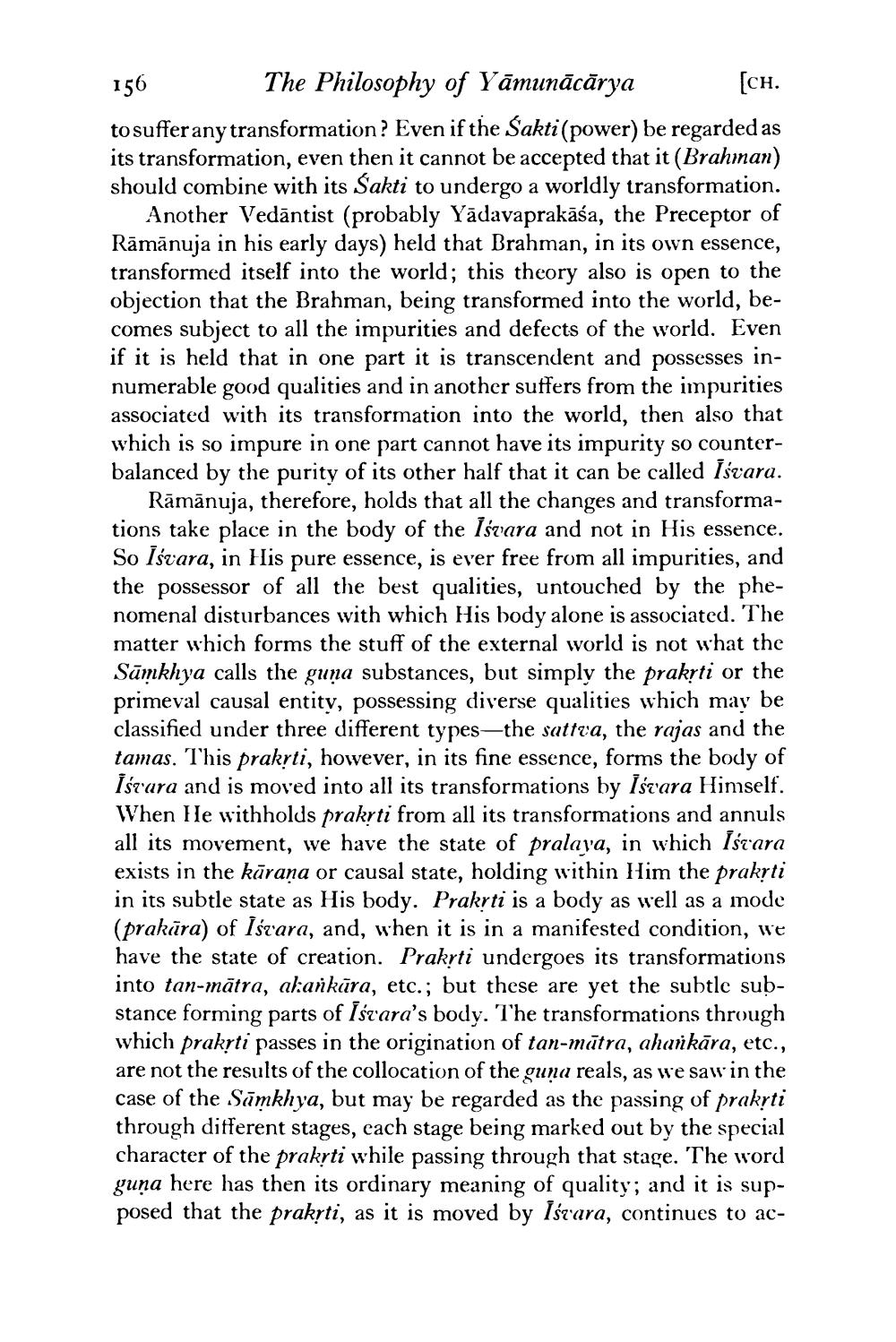________________
156
The Philosophy of Yāmunācārya [CH. to suffer any transformation? Even if the Sakti (power) be regarded as its transformation, even then it cannot be accepted that it (Brahman) should combine with its Sakti to undergo a worldly transformation.
Another Vedāntist (probably Yādavaprakāśa, the Preceptor of Rāmānuja in his early days) held that Brahman, in its own essence, transformed itself into the world; this theory also is open to the objection that the Brahman, being transformed into the world, becomes subject to all the impurities and defects of the world. Even if it is held that in one part it is transcendent and possesses innumerable good qualities and in another suffers from the impurities associated with its transformation into the world, then also that which is so impure in one part cannot have its impurity so counterbalanced by the purity of its other half that it can be called Išvara.
Rāmānuja, therefore, holds that all the changes and transformations take place in the body of the īśvara and not in His essence. So īśvara, in His pure essence, is ever free from all impurities, and the possessor of all the best qualities, untouched by the phenomenal disturbances with which His body alone is associated. The matter which forms the stuff of the external world is not what the Sāmkhya calls the guna substances, but simply the prakrti or the primeval causal entity, possessing diverse qualities which may be classified under three different types—the sattva, the rajas and the tamas. This prakrti, however, in its fine essence, forms the body of Isvara and is moved into all its transformations by Isvara Himself. When He withholds prakrti from all its transformations and annuls all its movement, we have the state of pralava, in which Iscara exists in the kāraṇa or causal state, holding within Him the prakrti in its subtle state as His body. Prakrti is a body as well as a mode (prakūra) of Išvara, and, when it is in a manifested condition, we have the state of creation. Prakrti undergoes its transformations into tan-mātra, akankūra, etc.; but these are yet the subtlc substance forming parts of īśvara's body. The transformations through which prakrti passes in the origination of tan-mātra, ahankāra, etc., are not the results of the collocation of the gunu reals, as we saw in the case of the Samkhya, but may be regarded as the passing of prakyti through different stages, each stage being marked out by the special character of the prakrti while passing through that stage. The word guņa here has then its ordinary meaning of quality; and it is supposed that the prakrti, as it is moved by iśrara, continues to ac




